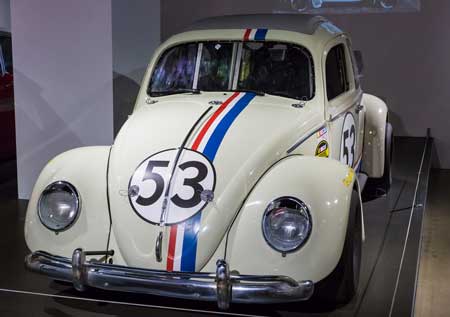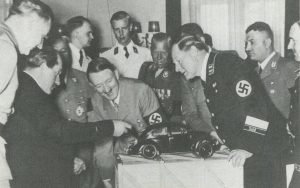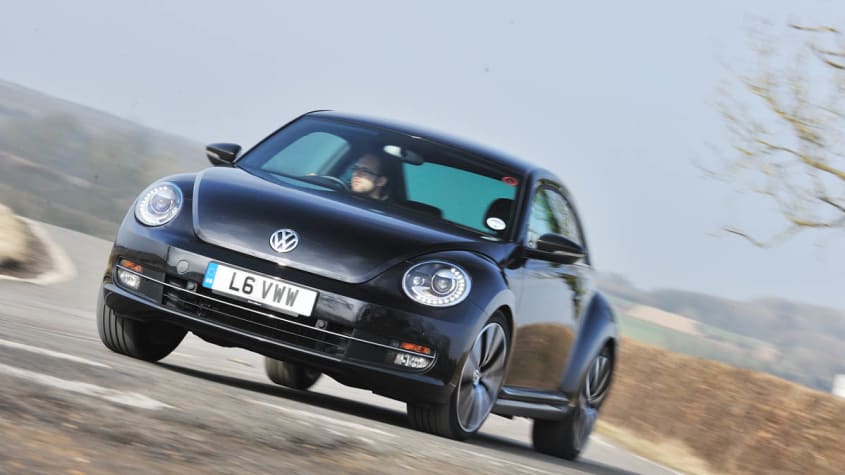
This car is a legend. That’s all we have to know. We don’t need numbers and figures to prove the charisma of an icon, we just know. However, the Volkswagen Beetle has so much to say, and they’re not just boring facts, but a cool story to how it became our favorite bug. Maybe that’s why we came to love bug beetle in the first place. So why don’t we refresh our memories and take a road trip back to where it all happened, then arrive at why we think it is legendary. Seatbelts?
I told you this would be interesting. Even Hitler was a fan! This was in 1938, three years after Dr. Ferdinand Porsche, the man beside Hitler and the mastermind of Beetle’s unique design, created the Volkswagen which means “people’s car” in German. He later created his line of cars and named it after him. Ring a bell?
How born the VW beetle idea and the love of bug beetle
If you are curious and you love the beetle you have to know a little bit of its story first.
In 1931, Ferdinand Porsche and Zündapp developed the Porsche Type 12 the first Volkswagen, the “Auto fur Jedermann” which means “the car for everyone“. Porsche had already developed a four-cylinder boxer air-cooled engine and Zündapp was developing a water-cooled 5-cylinder radial engine. Porsche had chosen a torsion bar rear suspension by Edward Rumpler.
In 1932, there were already three prototypes, and later a fourth in 1933, the Porsche Type 32, built by the NSU motorcycle factory.
Adolf Hitler loved bug beetle since its born.
In 1933, Adolf Hitler commissioned Porsche to design a car for the people (literally in German, Volks Wagen). The car should have a capacity for two adults and two children, with room for suitcases and be able to reach 100km/h. The German National Socialist Party had already used the term “Volks” for other party-sponsored products, such as the Volksradio.

However, the name Volkswagen would not be the official one until a few years later. This new vehicle was initially named Porsche Type 60 and then baptized as KdF-Wagen. KdF was the initials of Kraft Durch Freude (Strength through Joy), the leisure section of the Third Reich.
The first prototype released was in October 1935, the Type 60, known as the V1. In 1936 tests began with the three V3 prototypes manufactured at Porsche’s Stuttgart facility. In 1937, the 30 W30 models, manufactured by Daimler-Benz, already accumulated 2,900,000 km of tests. All vehicles already had the distinctive rounded shape and air-cooled engine at the rear.
Hitler’s plans and his love for the bug beetle were to make this new vehicle available to everyone and for that, he introduced a form of fractional payment. Consumers would buy a “Sparkarte” (a coupon booklet) for 1 Reichsmark, equivalent to about 25 euro cents. After buying the coupon book, you had to buy at least 5 Reichsmarks in coupons a week. The total price that for the basic vehicle was 990 Reichsmark.
In 1938, the Stadt des KdF-Wagens was built around the village of Hesslingen which was where the workers of the KdF-Wagen factory lived.
When World War II broke out in 1939, only a few units had been for consumers.
The war and the beetles
The two main vehicles produced during the war were variants of the Beetle, as the four-cylinder boxer air-cooled engine and rear torsion bar suspension was ideal for the harsh desert conditions in Africa.
Firstly was the Type 82 Kubelwagen, a very basic all-terrain utility vehicle. German military officers had stipulated that the total weight of the fully-loaded Kubelwagen (including 4 soldiers armed for battle) should not exceed 950 kg, leaving the maximum weight of the unladen vehicle at 550 kg. Porsche subcontracted Trutz, an experienced manufacturer of military vehicles, to collaborate on the body design.
The first successful tests were out in 1938 and continued in Poland in 1939. The result of these tests prompted the German military to ask for some important changes. Although the vehicle had shown impressive results on all terrains, even compared to some 4x4s that already existed at the time, the military thought it could be improved, and that the minimum speed of the vehicle had to be reduced from 8km/h to 4km/h in order to match the troops’ walking speed.
Porsche gearboxes
Porsche responded to these requests by installing “gearboxes” (what in practice was a second gearbox with a higher torque), larger wheels and a revised suspension. The gearboxes together with ZF’s self-locking differentials increased the vehicle’s all-terrain capability and made it possible to reduce the minimum speed to match the pace of the troops. Kubelwagens began mass production as soon as the factories at Stadt des KdF-Wagens were finishing.
The second vehicle produced during this period was the Type 166 Schwimmwagen, based on the Kubelwagen 4×4 prototype. The Schwimmwagen was an amphibious all-terrain vehicle using an extended crankshaft that operated a folding propeller at the rear of the vehicle.
This propeller coupling was so simple that the Schwimmwagen could only use the propeller to move forward. To reverse it was necessary to paddle or use the ground wheels to reverse slowly.
The Beetle Turbo
Presenting the Beetle Turbo another reason for our love for bug cars. Convertible sculpted from powerful cosmetic enhancements. It’s an extensive package composed of performance-inspired perks and detailed sleek. You can still sniff the original one’s charm, but this one’s created to suit our contemporary needs. What a beauty!
Re-designing the Beetle is like a noob going head to head with the Godfather. The chances are slim. But why do people still applaud the Beetle despite its evolution throughout the century? May it be the name, the design, the movie, or its story, the Love Bug lives on! It’s legendary, and that’s all we need to know.






